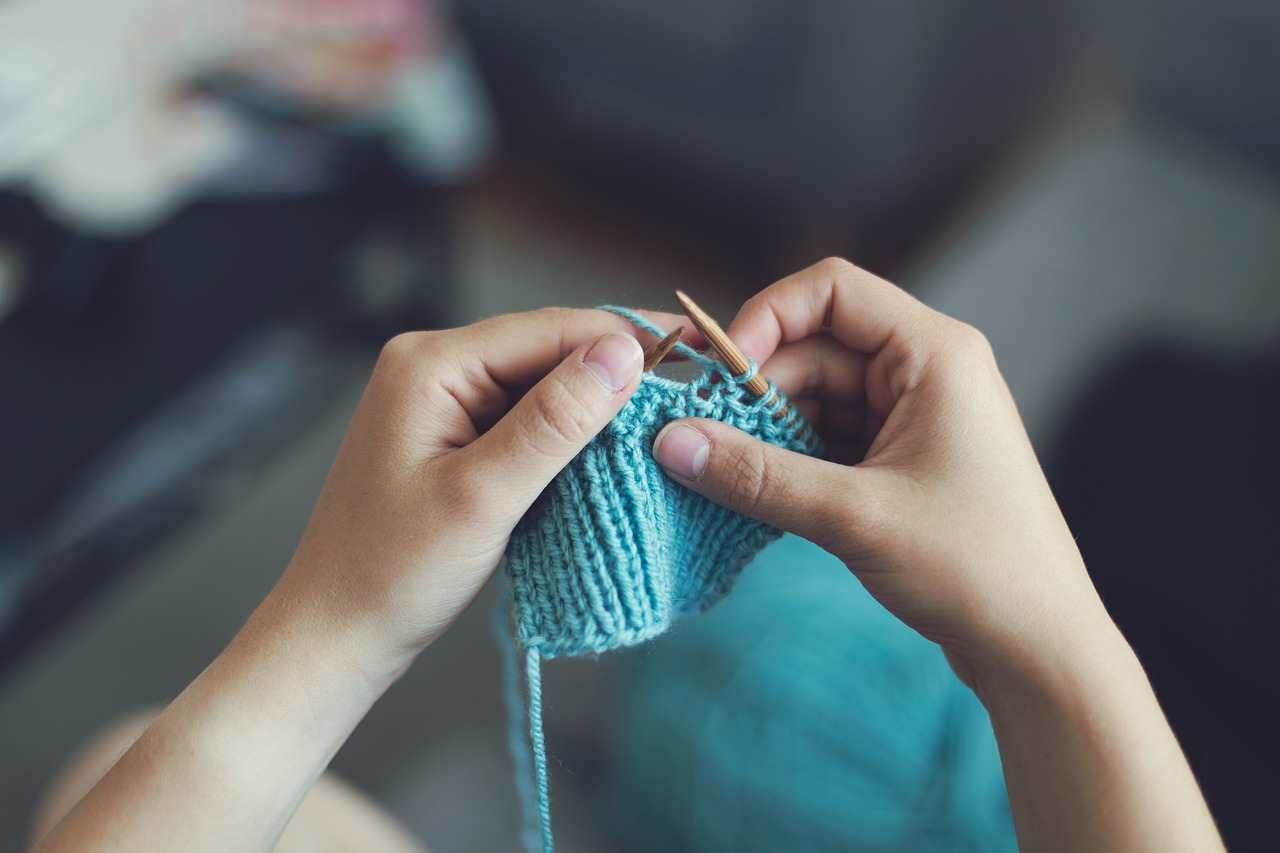I said to my husband one night, “Do you know why I started knitting?”
He allowed as how he didn’t. I said, “Because everybody else was doing it.”
He (understandably) expressed some surprise. Usually I have much better reasons for my activities. At the time (some months ago) I wasn’t even convinced that I actually enjoyed knitting. But if I wanted to go and hang out with the women of the coffee shop, knitting seemed to be the expected activity. (Yes, I live somewhere with one coffee shop. And it closes at 8.)
Let me now answer my first question: No. Knitting will not save the world. It won’t even clothe it very efficiently. It takes 15 – 75 hours to knit a pair of socks by hand. Depending on the density of stitches, a sweater takes 20 – 200 hours. This is a very slow way of making cloth.
My weaver friends assure me that, although it takes a long time to set up a loom, the production of the cloth is much faster. Yet, here we sit, week after week, clicking away at a skill that was rendered obsolete by the ready-to-wear industry decades ago. Some of the more… um, let us be kind and say, diligent… start with raw fibre, and spin the yarn before they start to knit.
I’m not going to take up spinning. I have to draw the line somewhere. If I had to pick a single textile craft as my life’s work, I would prefer to sew. (In fact, for the immediate payoff, I find carpentry pretty sweet, but the circular saw is understandably unwelcome at the cafe.)

Knitting is slow. Reaaaaaallllllly slow. I have all those beautiful dress patterns, and I know I could knock off something comparable with the sewing machine in a couple of hours… but no, I’m going to spend three months making a skirt. And that drawback of knitting, in a nutshell, is also the main benefit. It slows you down. Right down. You get a bit faster at it with practice, but in the end, there’s just you, the yarn, and 16,000 stitches. And that slowing down might help a little with saving the world.
Let’s look at it this way: It definitely impedes my ability to consume resources. While I’m knitting, I can’t drive. I can’t eat. I can’t go shopping. Even better, it’s a lightweight hobby. Those 16,000 stitches only take about 100 grams of fibre. It tends to tether me to interesting conversations: “Why don’t you come over and we can knit and have a cup of tea?” These informal social networks are precisely the kind of community that is being extolled for its contributions to happiness, health, and meaningful relationships.
So, there’s my take on it. Knitting: Not going to save the world, but world saving is a potential side effect. And at the end of the day month, I have new socks to show for the effort.


7 responses to “Can Knitting Save the World?”
Have you seen the speed knitters on youtube? It is crazy. 🙂
I’m asking for a saw for Christmas too. I hope I get it.
I wish I could knit, so I could knit some hats for my family. Maybe some day I’ll figure it out.
I would just sew some funky fleece hats, if I were you. It looks like you drive a mean sewing machine. Knitting is a gateway fibre art, I’m afraid. See below? The spinners are still trying to get me!
I love knitting with you. Are you sure we can’t twist your arm and get you spinning? 😉
I am a sewist at heart, but I like knitting for its portability. I can’t set up my sewing machine in a coffee shop.
As for the coffee shop, I live in the suburb of a fairly good-sized city. And yet, I have no idea what time the coffee shops close. Thanks to my young children, I’m never out past 7 so really, they could all close at 8 and I would be none the wiser.
Ah. I like to put the children to bed, and *then* go out. So it matters that everything pretty much closes before they go to sleep. (We have spare teenagers living in our apartment, so there’s a little more flexibility in our coming and going.)
Oh definitely try spinning! If you’re into slowing down and getting mileage from your enjoyment of yarn, spinning extends that time you have to play with the fiber. You can also get an amazing variety of texture and colour from handspun yarn that just isn’t there in mill spun.
[…] It’s more accessible, it can be used for many things, it reconnects us to our bodies, it slows us down… or rather, it prevents us from speeding up as much as we are able to when relying on fossil […]